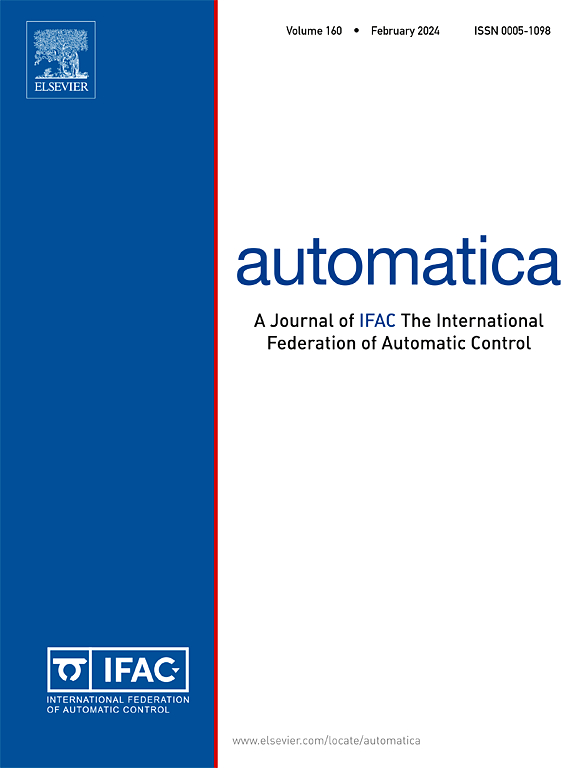非线性多智能体系统的分布式安全关键控制
IF 5.9
2区 计算机科学
Q1 AUTOMATION & CONTROL SYSTEMS
引用次数: 0
摘要
研究了具有各智能体约束和智能体间约束的非线性二阶多智能体系统的安全临界控制问题。我们通过引入截断函数来平滑地添加和删除边缘集中的链路,克服了时变和位置依赖的有限传感范围的通信网络的挑战,并设计了一个分布式的局部lipschitz -连续安全关键控制律,该律由用于达成共识、形成和位置交换等目标的标称控制器和安全控制器组成。只有当某个相邻代理进入自定义设计的边界集时才生效。同时,为了严格验证整个多智能体系统的安全性,在放宽可行性条件下,提出了一个连续可微的控制屏障函数,即只在边界区域需要,施加在每个子系统上。本文章由计算机程序翻译,如有差异,请以英文原文为准。
Distributed safety-critical control of nonlinear multi-agent systems
This paper considers the safety-critical control problem for nonlinear second-order multi-agent systems with constraints of each agent and inter-agent ones. We overcome the challenge of the time-varying and position-dependent communication network with limited sensing range by introducing a truncated function for the smooth addition and deletion of links in the edge set, and design a distributed and locally Lipschitz-continuous safety-critical control law, composed of a nominal controller for the objectives such as consensus, formation, and position swapping, etc., and a safety controller, which only takes effect when some neighboring agent enters the custom-designed boundary set. Meanwhile, to rigorously verify the safety of the whole multi-agent system, a continuously differentiable control barrier function is proposed under a relaxed feasibility condition in the sense that it is imposed on each subsystem and only needed in the boundary area.
求助全文
通过发布文献求助,成功后即可免费获取论文全文。
去求助
来源期刊

Automatica
工程技术-工程:电子与电气
CiteScore
10.70
自引率
7.80%
发文量
617
审稿时长
5 months
期刊介绍:
Automatica is a leading archival publication in the field of systems and control. The field encompasses today a broad set of areas and topics, and is thriving not only within itself but also in terms of its impact on other fields, such as communications, computers, biology, energy and economics. Since its inception in 1963, Automatica has kept abreast with the evolution of the field over the years, and has emerged as a leading publication driving the trends in the field.
After being founded in 1963, Automatica became a journal of the International Federation of Automatic Control (IFAC) in 1969. It features a characteristic blend of theoretical and applied papers of archival, lasting value, reporting cutting edge research results by authors across the globe. It features articles in distinct categories, including regular, brief and survey papers, technical communiqués, correspondence items, as well as reviews on published books of interest to the readership. It occasionally publishes special issues on emerging new topics or established mature topics of interest to a broad audience.
Automatica solicits original high-quality contributions in all the categories listed above, and in all areas of systems and control interpreted in a broad sense and evolving constantly. They may be submitted directly to a subject editor or to the Editor-in-Chief if not sure about the subject area. Editorial procedures in place assure careful, fair, and prompt handling of all submitted articles. Accepted papers appear in the journal in the shortest time feasible given production time constraints.
 求助内容:
求助内容: 应助结果提醒方式:
应助结果提醒方式:


